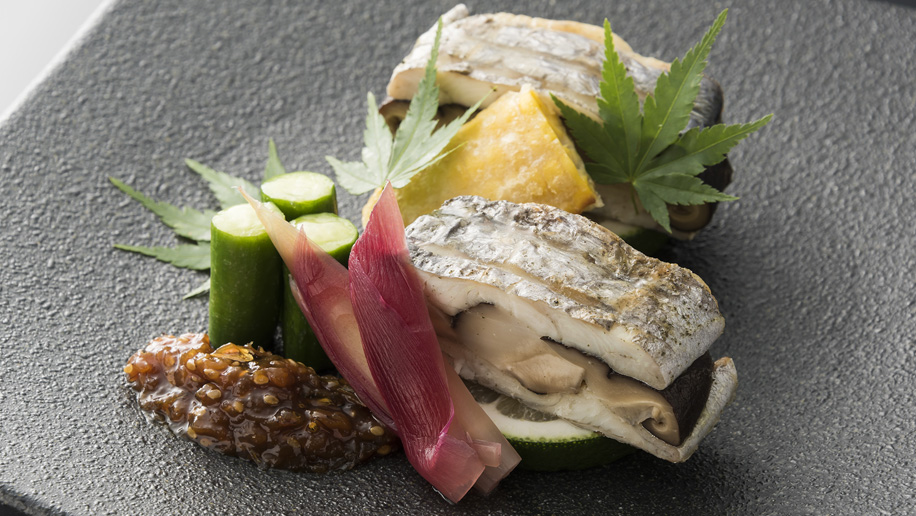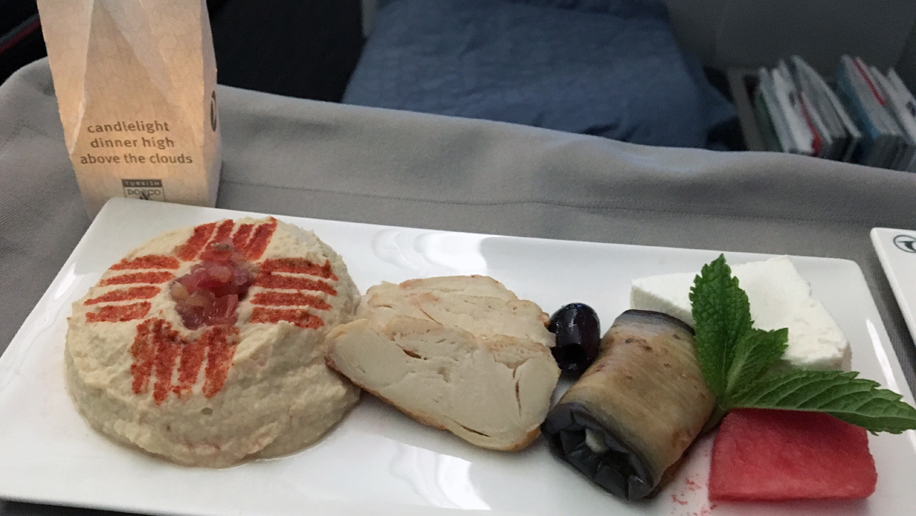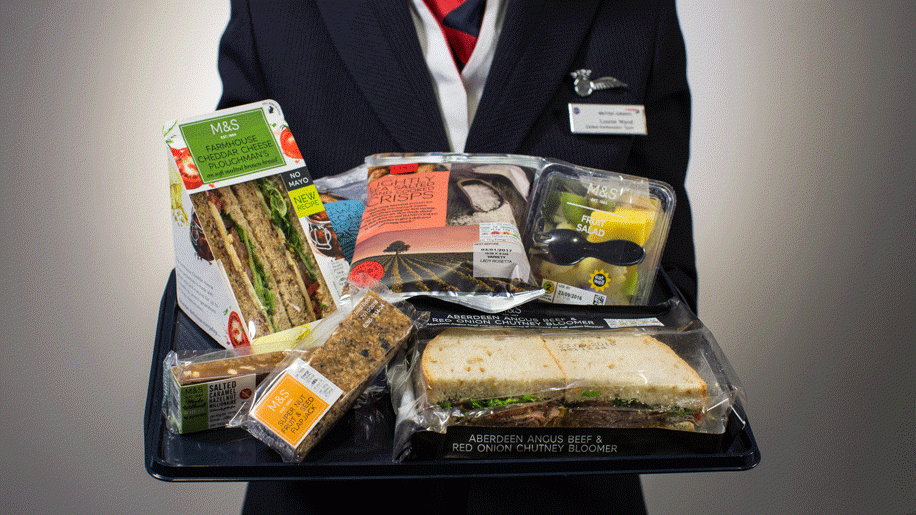
I was eight years old the first time I set foot on an aeroplane. I recall eagerly removing the foil of my breakfast meal, only to be greeted by a sad, grey sausage, a thin strip of bacon and a squishy yellow cube masquerading as an omelette. The whole experience was so disheartening that today I still find it hard to choose Western meal options…
Fast-forward more than two decades, and in-flight meals have undoubtedly improved in every way. It’s not just taste that has been tackled, but conception, appearance, presentation and service.
“Whilst there are many factors that individual customers consider when selecting their flights – including schedule, price and convenience – there’s no doubt that the ground and air experience are becoming more important differentiators,” says Chris Birt, general manager of service delivery for Hong Kong Airlines. “Customer feedback tells us that the quality of meals is a very important part of the overall onboard experience, and this is especially the case on longer flights.”
So, how are airlines upping their culinary game?

Collaborations
One current trend we’re seeing is collaborations with independent chefs from renowned restaurants across the globe. For example, from March 1, Delta rolled out new menus on services departing North Asia, developed in consultation with local culinary partners such as Chinese chef Jereme Leung, whose menu featured Shaanxi biang biang noodles and Shanghai-style steamed sole on flights departing Beijing and Shanghai. On flights leaving Japan, meanwhile, chef Norio Ueno’s menu features dishes such as marinated rockfish and kuro-bata pork. This summer, passengers out of Seoul will also be able to enjoy creations from chef Woo-Joong Kwon, whose Korean restaurant has earned two Michelin stars.
“Dining, no matter where you are, should be an experience that is enjoyed and remembered,” says Allison Ausband, Delta’s senior vice president of in-flight services. “Making sure the experience is as authentic to local culture as it is delicious is at the core of how we develop our in-flight menus, and why we wanted to partner with chefs Jereme Leung, Norio Ueno and Woo-Joong Kwon, who are so well respected in their home countries.”
In Europe, Finnair introduced its Signature Chef programme back in 2013, bringing specially designed dishes from prominent chefs into its cabins. Most recently, this included its first Japanese Signature Chef, Rika Maezawa, who has created five seasonal menus to highlight Japanese home cooking for flights from Tokyo to Helsinki, as well as Korean chef Sung-Yeol Nam serving up dishes inspired by his childhood on Finnair’s flights from Seoul.
Special menus can help with the fanfare of promoting a brand-new service – something Hong Kong Airlines has been doing regularly over the past year. For the launch of its non-stop Vancouver service last year, the carrier developed a business class menu alongside chefs Sam Leung and Garley Leung of Vancouver-based Dynasty Seafood Restaurant, as well as a new signature cocktail called the Bauhinia that was developed by David Wolowidnyk, the renowned mixologist at the Fairmont Pacific Rim’s Botanist restaurant.
For Hong Kong Airlines’ latest long-haul route launch to San Francisco in March, the carrier partnered with celebrity chef Chris Cosentino, a winner on the TV series Top Chef Masters who now runs the upscale Cockscomb restaurant in San Francisco, to develop a unique business class menu for flights leaving the US city.
However, not every route launched by the airline gets this treatment, since the logistics of supplying numerous menu options is more complicated; developing unique menus takes longer, and involves significant reworking of chefs’ recipes in order to adequately replicate their dishes on board to counter factors like altitude and in-cabin preparation.
“Many chefs that we’ve collaborated with have little to no experience in the airline catering environment so it can be a steep learning curve for everyone involved,” says Birt. “The development of a standard menu is comparatively easy as the chefs involved will have past experience of airline catering, so they will know what will and won’t work, whereas a collaboration chef likely wouldn’t.”

Local highlights
Airlines don’t always need to partner with local chefs in order to highlight cuisine unique to a particular destination, however. Many offer localised menus that give a peek into the cuisine of a particular destination while also providing a familiar taste to travellers returning home.
When it comes to highlighting the unique and varied cuisine of one’s home country, few airlines have done as extensive a job as Japanese carrier All Nippon Airways (ANA). For the past five years, ANA has rotated the menus on its international flights every three months as part of its Tastes of Japan by ANA series, each time showcasing culinary highlights from three of Japan’s 47 prefectures.
In December, the airline introduced the second phase of its campaign, focusing instead on the traditional fare of one of the country’s eight regions. The first area explored was Hokkaido, while last month saw the launch of a new Kyushu-themed menu. “When deciding which region to focus on for Tastes of Japan, we look into historically prominent months and years, such as Hokkaido’s 150th naming anniversary or Kyushu’s 150th anniversary of the Meiji Restoration,” said an ANA spokesperson.
In the case of the new Kyushu-inspired menu, which will run until the end of August, this includes dishes such as smoked cuttlefish and eggplant tartar curry with Miyazaki Caviar 1983, which is being served to first class passengers on the airline’s flights to North America and Europe. Business class passengers on flights to North America, Europe and Mexico, meanwhile, can expect to find dishes such as marinated stir-fried Kinboshisagabuta pork, eggplant and cucumber with chopped Japanese leek. ANA is also offering passengers a range of up to 76 different types of kokushu – Japanese sake, shochu and millet brandy – at its Tokyo Haneda, Tokyo Narita and Kansai lounges.
Having a rotating menu is not without its challenges. “We start developing menus up to a year prior, and make an effort to order just the right amount to prevent waste,” said the ANA spokesperson.

Special features
Some airlines go to even greater lengths to give their customers a culinary treat. Korean Air, for instance, took over Jedong Farm on Jeju Island back in the 1990s, and launched its one-of-a-kind “From Farm to Cloud” concept. To this day, meals in business and first class are prepared using ingredients such as beef, chicken and vegetables sourced directly from Korean Air’s own farm.
Australian flag carrier Qantas, meanwhile, collaborated with the University of Sydney’s Charles Perkins Centre to develop a tailored menu for “combating sleep disruption” in the run-up to the March launch of its 17 plus-hour flights between Perth and London.
“The menu we are trialling on the Perth to London route will continue to offer a selection of customer favourites, but it has some special ingredient additions and exclusions,” said Neil Perry, Australian celebrity chef and Qantas’s creative director of food, beverage and service. For example, particular ingredients such as chilli are restricted to specific times of the day – ie not just before passengers are planning to sleep. Instead, hot chocolate, which includes the sleep-inducing amino acid tryptophan, is served at bedtime. Leafy green vegetables as well as cucumber, celery and strawberries are also more prominent in the menu owing to the hydrating benefits they offer, and lighter meal options such as tuna poke salad bowls have been added. Probiotic-infused drinks, such as organic kombucha by Remedy and cold-pressed juice shots are also included in the menu.
Of course, many travellers prefer to opt for a different age-old sleeping aide: alcohol. The quality of onboard offerings has improved appreciably in recent years, as can be seen from Business Traveller’s annual “Cellars in the Sky” wine-tasting awards.
Taking a novel approach, last year Cathay Pacific launched its own unique craft beer, specifically designed to be served at high altitudes where passengers’ palettes are altered. Developed by Cathay Pacific and the Hong Kong Beer Co, the craft beer – named Betsy after the airline’s first Douglas DC-3 aircraft – offers a sweeter taste than your average beer, in order to compensate for the changes in taste perception while up in the air.
For Chilean carrier LATAM, presentation is key. Last November, the airline gave its long-haul economy class dining a considerable overhaul, scrapping the traditional tray set-up in favour of individual dishes and removing many of the side options in favour of one single main, which is about 50 per cent larger than previously.
Even cutlery is being given renewed attention – despite passengers displaying a fondness for pinching the odd salt and pepper shaker for their collections. On its inaugural flight to Los Angeles in December 2017, Hong Kong Airlines unveiled an eye-catching set of Bauhinia-inspired cutlery featuring seed pod dishes, leaf-shaped plates and dim sum-inspired salt and pepper pots. Turkish Airlines, meanwhile, has added a touch of class to its meal trays, with a flickering candle-effect light to give guests a “Candlelit dinner in the sky”.

Pre-select/Dine on demand
Giving customers greater control over what and when they eat is also starting to gain momentum. Qatar Airways offers its passengers in first and business class a Dining-on-Demand à la carte menu, which enables travellers to order and eat their meals at a time of their choosing.
Logistically, however, such a service can be highly demanding: Cathay Pacific trialled its own dine-on-demand service last year, however this quickly disappeared after it proved unfeasible.
Other carriers are choosing to increase passengers’ options by offering a pre-select meal that can be chosen up to 24 hours before their flight. Back in August last year, Qatar Airways began rolling out its Pre-Select Dining service on certain routes to Europe, North and South America, Australia and New Zealand. Air China, meanwhile, trialled a similar concept last year for first and business class passengers on a number of its routes to North America, Europe, Africa and Australasia.
Few of these services, however, are quite as renowned as Singapore Airlines’ Book the Cook concept. Available to first, business and, to a limited extent, premium economy passengers, Book the Cook has become an iconic fixture of the airline’s in-flight catering.

Buy on board
Of course, not all developments in the in-flight dining sphere have been positively received by passengers. As legacy carriers face increasing competition especially from budget carriers, many have begun introducing features that bear the distinct hallmark of low-cost travel, and in the culinary sphere that has largely taken the form of buy-on-board dining.
For full-service carriers, whose fares typically include all in-flight meals, the introduction of purchasable meals and snacks has been met with resistance. This has been the case for British Airways, which introduced the concept with Marks & Spencer products on its short-haul and domestic flights from London Heathrow and Gatwick in early 2017.
Abu Dhabi-based Etihad also introduced the service to economy passengers on select routes (notably London, Paris and destinations in Australia), offering items ranging from cold brewed coffee to glasses of champagne – at a charge.
However for the most part, the increased competition in the catering department has proved to be a boon for travellers across all classes – with no sign that the industry’s appetite for innovation is waning.












